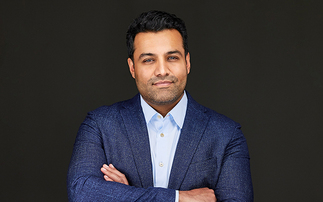
Investors need to look “beyond a compelling narrative,” according to Kenneth Lamon, senior manager research analyst of passive strategies at Morningstar.
Just last week, there were two new thematic funds launched into an already quite dense market, with WisdomTree introducing a recycling for decarbonisation UCITS ETF and AXA IM launching a biodiversity listed equity strategy. However, investor in these funds are highly unlikely to be completely exposed to these themes.
As Laith Khalaf, head of investment analysis at AJ Bell, explained: "It is unlikely that a fund will ever have 100% pure exposure to a given theme, because some investee companies will inevitably have more than one business line which dilutes the fund's weighting."
There is substantial variation in the ‘purity' of these funds to their theme and, indeed, how important purity is to them. That is why investors need to look "beyond a compelling narrative," according to Kenneth Lamon, senior manager research analyst of passive strategies at Morningstar.
"Every thematic fund takes a different approach to tracking its theme," he explained. "Even funds tracking the same theme can have dramatically different investment processes and subsequently very different performance outcomes."
To get a better picture, Investment Week questioned passive and active firms about theme purity and spoke to asset allocators about where these funds should sit within an overall portfolio.
The numbers
According to Morningstar, there is now more than $800bn invested worldwide in equity-based thematic funds, up from just $71bn at the end of 2011. The astonishing decade of growth is in part due to a surge of new funds, with a record 589 thematic funds launching in 2021, more than double the previous record of 271 in 2020.
Actively managed funds comprise the majority of assets, taking up three-quarters globally, including 90% of Europe's thematic AUM. The situation in the US is remarkably different, however, with 71% of thematic fund assets passively managed.
Looking at purity, there seemed to be an unofficial 50% watermark these funds were expected to hit, however some had thresholds as low as 20% and others aimed for significantly higher than 50%.
Pictet Asset Management, which has 15 thematic funds according to its website, sets a minimum purity threshold of between 20% to 50% depending on the fund.
Steve Freedman, sustainability and research manager of thematic equities at the firm, said the actual average purity of their thematic funds is "much higher than the minimum threshold".
As of 31 March 2022, it was above 55% for all Pictet Asset Management thematic funds. "The purity for Global Megatrend Selection, which invests equally across all single-theme portfolios and thus represents an average across the franchise, exceeded 75%," Freedman said.
Tom Riley, head of global thematic strategies at AXA IM, which has been growing its thematics business, said that "well over half of the investment in funds have more than 50% of revenues coming from the theme".
Rahul Bhushan, co-founder of thematic ETF issuer Rize ETF, did not specify the percentage but noted that funds were purity weighted.
"This means companies are weighted in our indices/ETFs by reference to their thematic (i.e., revenue) purity to the relevant investment theme," he explained.
AXA IM launches biodiversity equity strategy
Is purity the end goal?
For Bhushan, purity is clearly the end goal.
He said: "One of the reasons we created Rize the company was our complete disillusionment at how the thematic fund industry was creating thematic products, identifying companies to include in those thematic products, and weighting companies in those thematic products. We knew there was a better way."
He noted that, particularly in the thematic ETF space, the majority of providers equal weight companies, meaning those with "trivial links" to the theme are weighted the same as those exposed.
Freedman said Pictet took a similar approach to Rize, with lower purity companies "penalised".
"We view this as a risk management tool, as low purity companies have a greater exposure to activities that are not central to the theme and may be less well understood," he explained.
This is something that fund pickers at Mediolanum International Funds Limited like to see in thematic portfolio construction. Senan O'Sullivan, senior investment analyst at the firm, went on to say that they believe the minimum threshold for a stock's inclusion is 50% of its revenues derived from the activities that link directly to the theme.
However, Lamont cautioned: "There is no single theme beta, no single correct way to track a theme" and that "purity is in the eye of the beholder."
Indeed, AXA IM, while acknowledging this quantitative analysis was a "nice, clean way of doing it," added that it was "not without its challenges".
One of those challenges is that the assets in an investor's portfolio are highly correlated. "There are perhaps limited places to hide or to tilt the portfolio to try and position yourself for the economic environment," Riley explained.
Looking at revenues also means that in essence investors are "backward looking," as it tells them what a company has achieved and not what it will look like in two or three years time, he added.
Riley explained that for AXA, their funds have flexibility to invest in "lower purity" companies that some of its competitors, which they believe means they can invest ahead of the change.
He gave the example of a company that has 60% of its business that is not directly related to a theme. If the managers believe the 40% that is related is going to "invigorate growth, drive opportunities and the share price," then they would strongly consider it for inclusion.
Another concern for providers is liquidity. Given many "pure play" companies are small- or mid-cap, there needs to be an acknowledgment and management of liquidity risk.
Rize ETF has dealt with this by having liquidity weighted ETFs for "early stage themes" such as medical cannabis and life sciences, however it said this type of construction should be limited.
O'Sullivan said that if a fund cannot be optimally constructed than a multi-thematic approach should be taken.
"Multi-thematic funds have a greater ability to play niche themes in their purest form as they can select among the purest of stocks within each theme and allow theme level diversification to assist in portfolio construction and portfolio level diversification," he explained.
Satellite funds
However, no matter how these funds are deciding to play their themes, fund pickers are clear - they should only represent a small part of portfolios.
"Thematic funds should only be the icing on the cake for an already well-diversified portfolio, and so should make up no more than around 10% to 20% of a portfolio, thereby allowing investors to gain exposure to trends they see developing without carrying to many eggs in one thematic basket," according to Khalaf.
Dzmitry Lipski, head of fund research at interactive investor, agreed and added that for "longer-term investors who are prepared to be patient and tolerate higher volatility would be better off having exposure to not just one, but to a few themes in their portfolio".
What is obvious to all experts is that as this market continues to grow at pace, it is important for investors to be highly discerning in what they are looking for from their thematic funds and ensure they do not get too wrapped up in the "appealing narratives" they are marketing.















